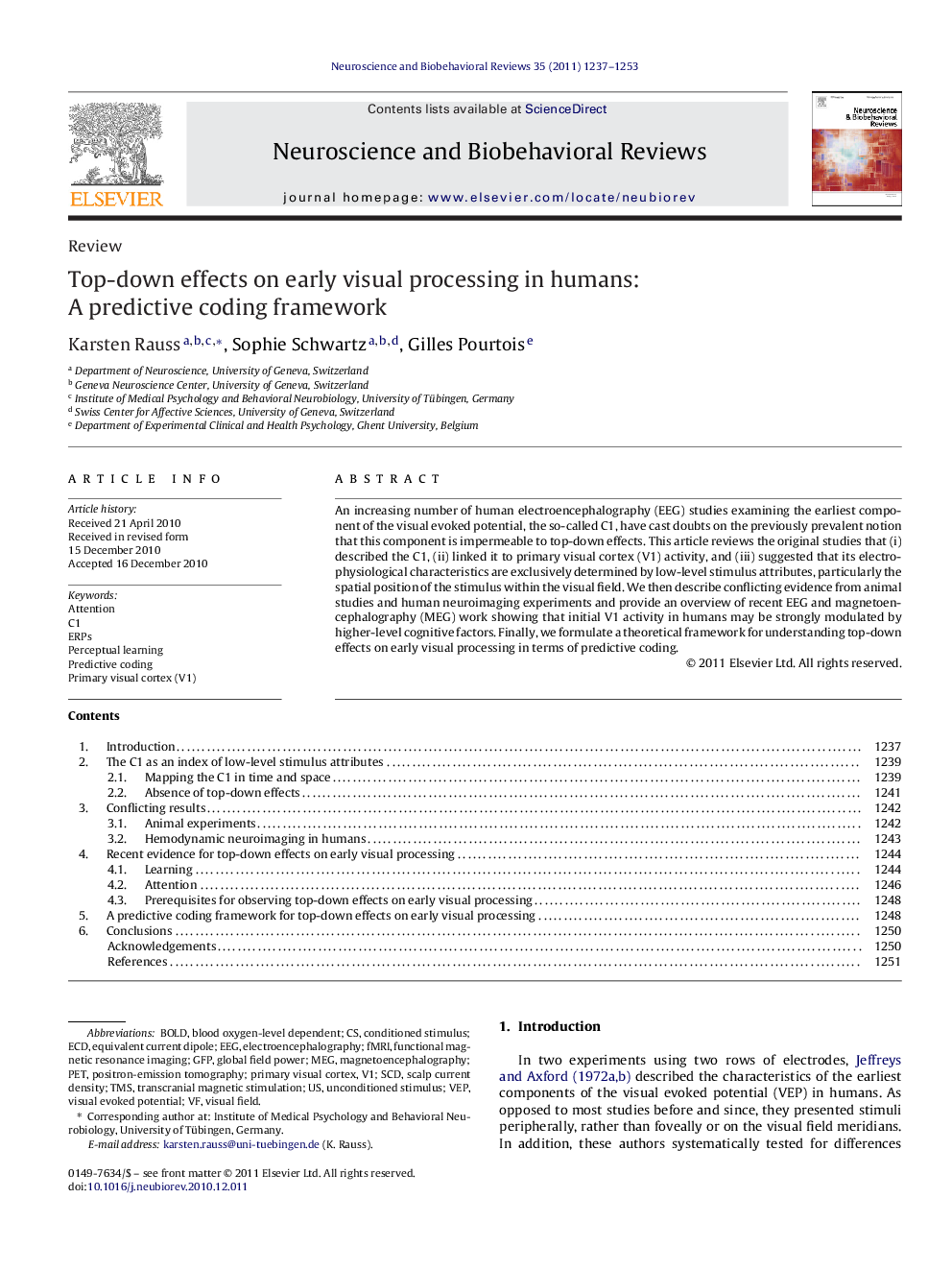| کد مقاله | کد نشریه | سال انتشار | مقاله انگلیسی | نسخه تمام متن |
|---|---|---|---|---|
| 937959 | 924562 | 2011 | 17 صفحه PDF | دانلود رایگان |

An increasing number of human electroencephalography (EEG) studies examining the earliest component of the visual evoked potential, the so-called C1, have cast doubts on the previously prevalent notion that this component is impermeable to top-down effects. This article reviews the original studies that (i) described the C1, (ii) linked it to primary visual cortex (V1) activity, and (iii) suggested that its electrophysiological characteristics are exclusively determined by low-level stimulus attributes, particularly the spatial position of the stimulus within the visual field. We then describe conflicting evidence from animal studies and human neuroimaging experiments and provide an overview of recent EEG and magnetoencephalography (MEG) work showing that initial V1 activity in humans may be strongly modulated by higher-level cognitive factors. Finally, we formulate a theoretical framework for understanding top-down effects on early visual processing in terms of predictive coding.
Research highlights▶ Reviews the history of research on the C1 component of the visual evoked potential. ▶ Brings together evidence for top-down modulations of the earliest processing stages in visual cortex in animals and humans. ▶ Proposes a predictive coding framework to explain diverging findings in the literature and to stimulate future research.
Journal: Neuroscience & Biobehavioral Reviews - Volume 35, Issue 5, April 2011, Pages 1237–1253